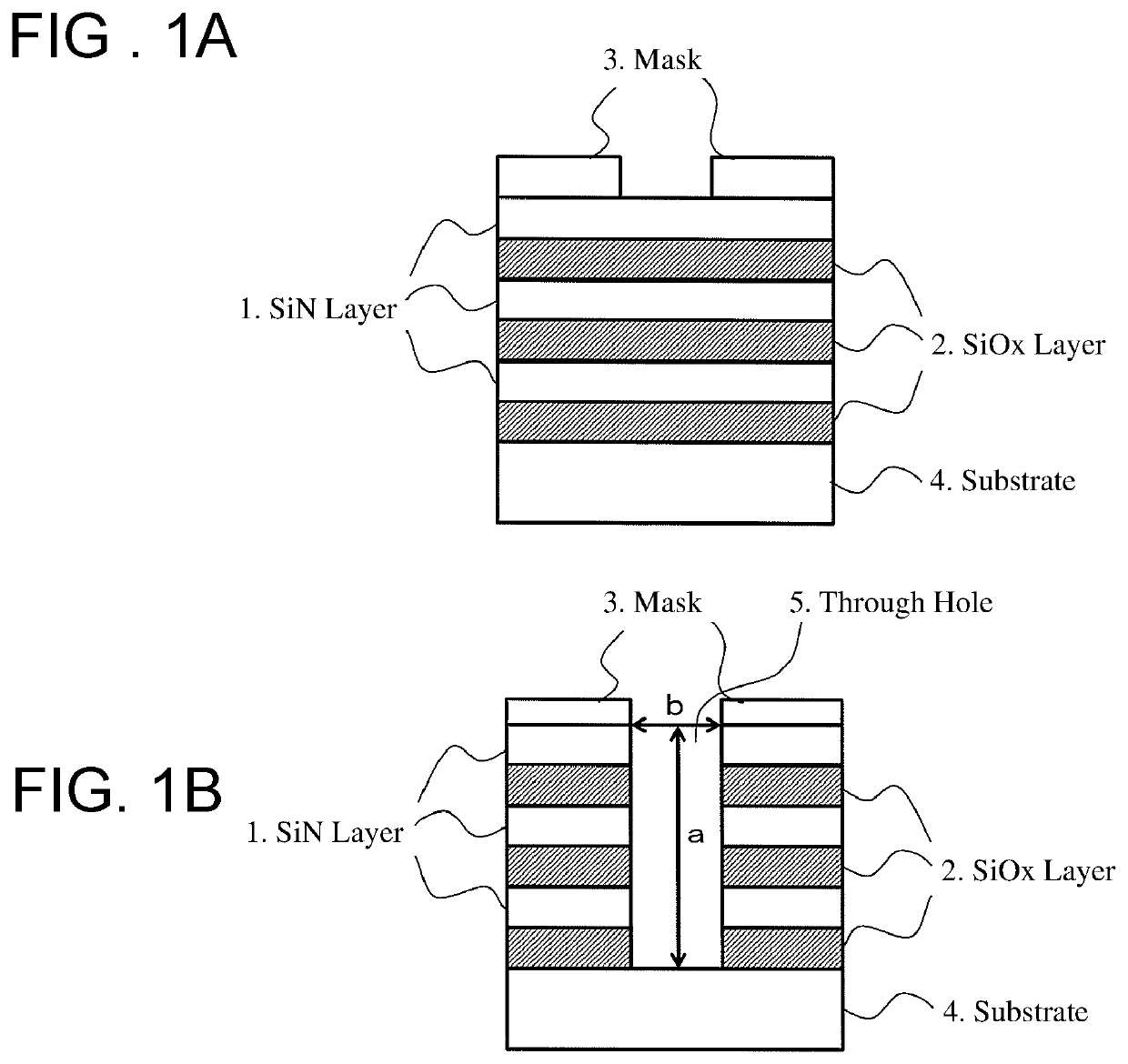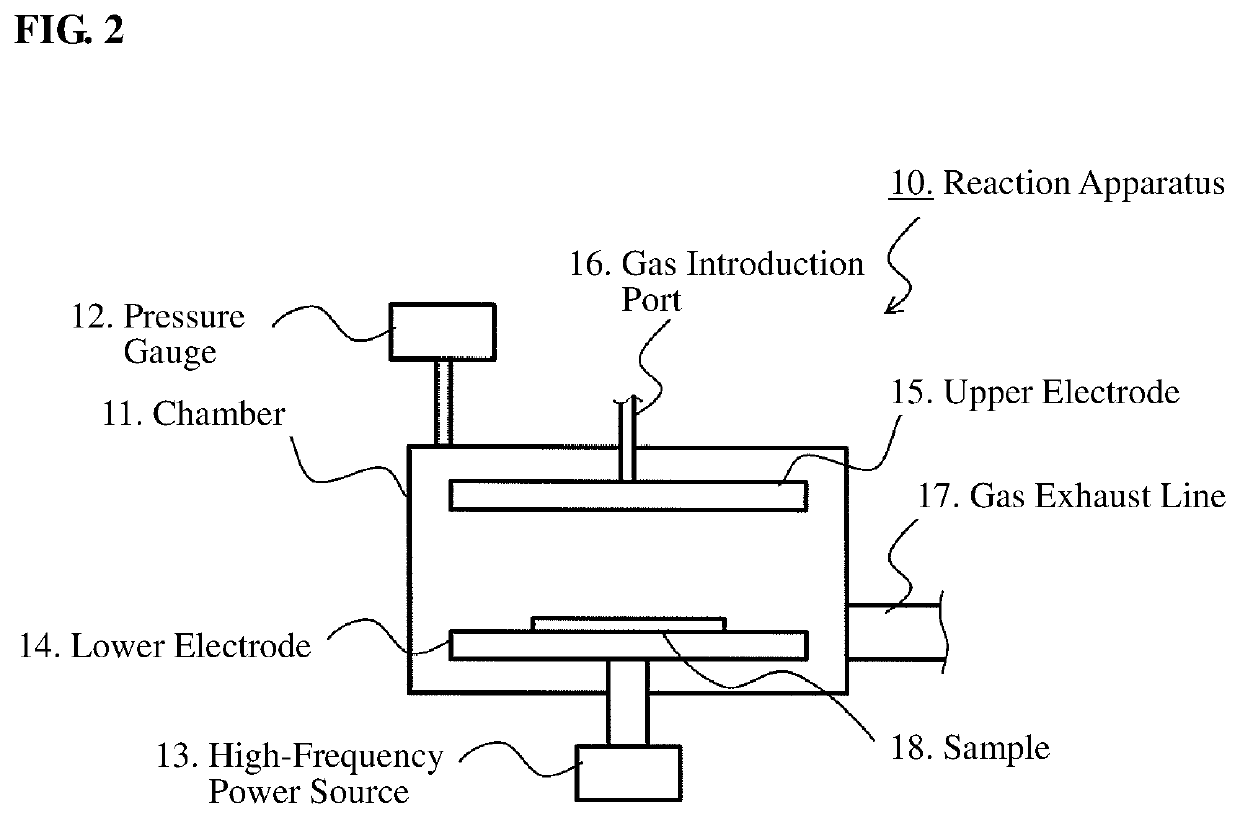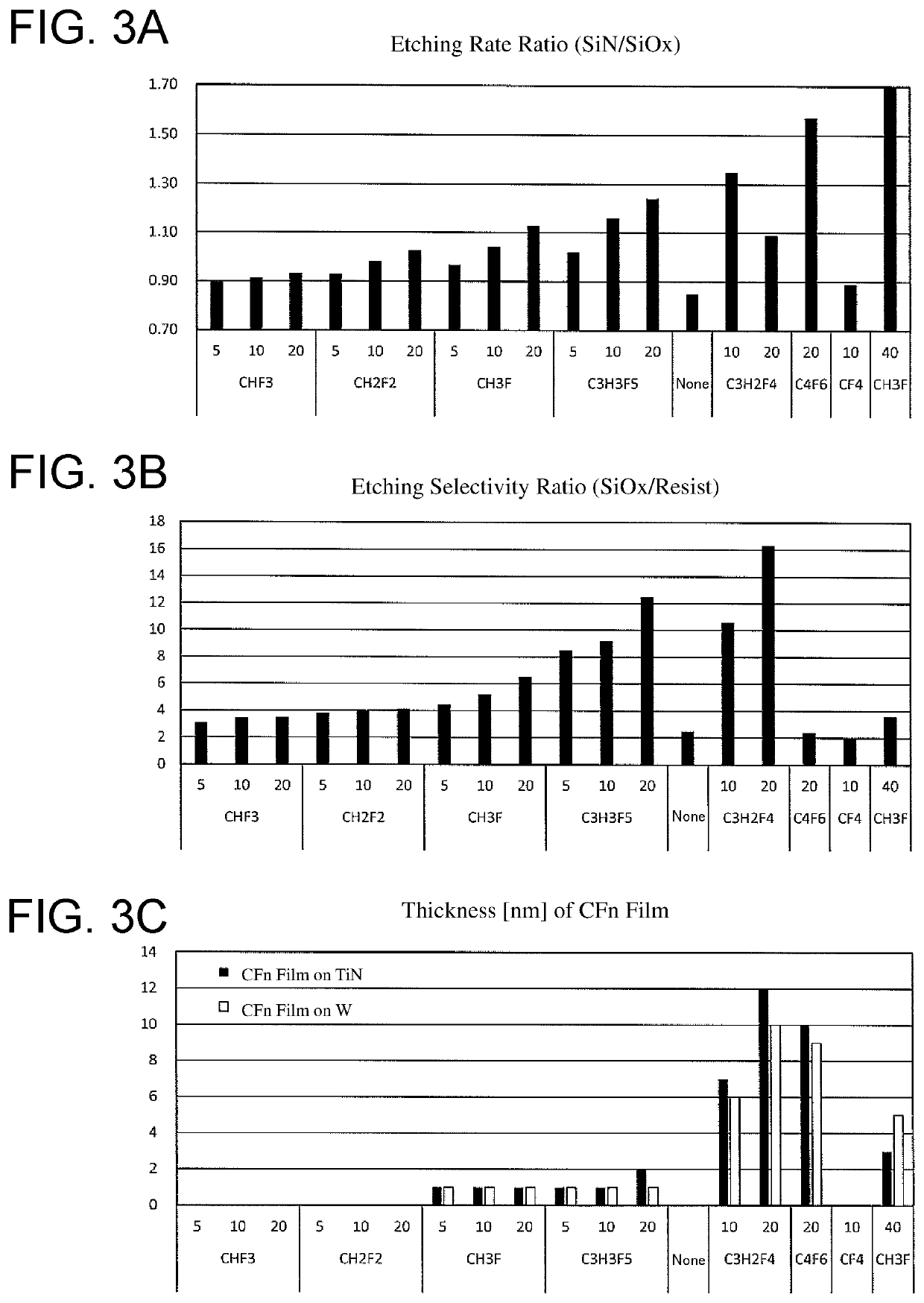Dry etching method
a technology of dry etching and etching plate, which is applied in the direction of basic electric elements, electrical equipment, chemistry apparatus and processes, etc., can solve the problems of anomalous etching shape, etching not lasting, and anomalous etching shap
- Summary
- Abstract
- Description
- Claims
- Application Information
AI Technical Summary
Benefits of technology
Problems solved by technology
Method used
Image
Examples
example 1
[0061](Etching Operation)
[0062]FIG. 2 is a schematic view of a reaction apparatus 10 used in Examples and Comparative Examples. In a chamber 11, a lower electrode 14, an upper electrode 15 and a pressure gauge 12 were arranged. Herein, the lower electrode 14 had the function of holding a sample 18 and thus also served as a stage. A gas introduction port 16 was connected to an upper part of the chamber 11. The chamber 11 was configured to control its inside pressure and to plasmatize a dry etching agent by means of a high-frequency power source (13.56 MHz) 13. Accordingly, the sample 18 was etched by bringing the plasmatized dry etching agent into contact with the sample 18 on the lower electrode 14. With the application of a high-frequency power from the high-frequency power source 13 in a state that the dry etching agent was introduced into the chamber, there was developed a direct-current voltage, called a self-bias voltage, between the upper electrode 15 and the lower electrode 1...
PUM
| Property | Measurement | Unit |
|---|---|---|
| self-bias voltage | aaaaa | aaaaa |
| bias voltage | aaaaa | aaaaa |
| aspect ratio | aaaaa | aaaaa |
Abstract
Description
Claims
Application Information
 Login to View More
Login to View More - R&D
- Intellectual Property
- Life Sciences
- Materials
- Tech Scout
- Unparalleled Data Quality
- Higher Quality Content
- 60% Fewer Hallucinations
Browse by: Latest US Patents, China's latest patents, Technical Efficacy Thesaurus, Application Domain, Technology Topic, Popular Technical Reports.
© 2025 PatSnap. All rights reserved.Legal|Privacy policy|Modern Slavery Act Transparency Statement|Sitemap|About US| Contact US: help@patsnap.com



